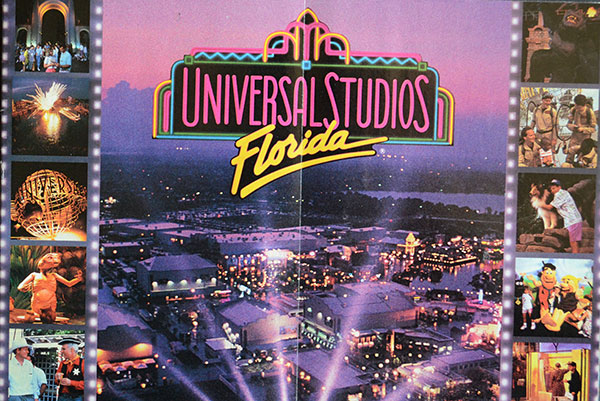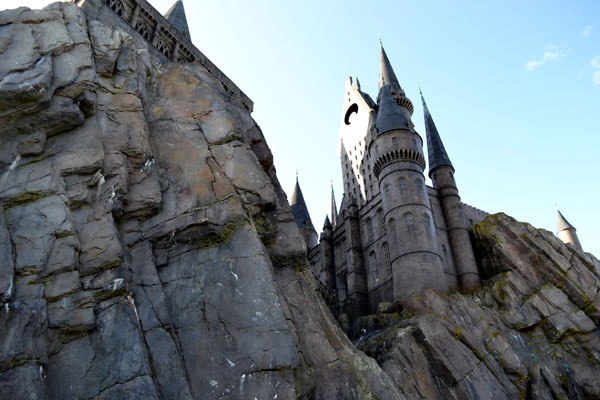
When Universal Studios Florida opened in 1990, it promised visitors the chance to “Ride the Movies!” and experience the magic up close. While the Hollywood original was centered on a tram ride through sets and attractions, individual structures would separate these experiences. There were thrilling encounters with King Kong and Jaws, but those combined with more sedate looks behind the scenes. There were no roller coasters, and even the craziest rides were accessible to families.
Designed to resemble a working studio and functioning that way for real-life productions, this park was hardly a gorgeous spectacle. The box-like structures masked the excitement inside and resembled indoor sets for big Hollywood features. A tour offered peeks at movies and TV shows in the works, but it paled in comparison to its California original and closed five years later.
There were plenty of technical problems during the first year, and Disney complicated matters by accelerating their own movie park to arrive one year earlier. This brought up inevitable comparisons between the two and didn’t help Universal’s opening.
A Different Beginning for Universal
How did the problematic Universal Studios evolve into today’s massive Universal Orlando resort? While the shell of the original layout is there, only one major attraction (E.T. Adventure) remains. The answer lies within the offerings of the park when it opened. The theme park landscape was much different and just starting the expansion that happened in the ‘90s. Disney was dominant over the family market, and regional parks from Six Flags and others owned the thrill ride market.
Universal tried to develop a mix of exciting rides and looks behind-the-scenes. DVDs hadn’t arrived to show us how movies are made, so getting a glimpse behind the curtain was a major draw. Attractions centered on Alfred Hitchcock, I Love Lucy, and even Murder She Wrote drew significant crowds. Let the last one sink in for a moment. Universal was aiming to please both adults and teenagers with this park. The high-tech Kongfrontation and Earthquake: The Big One rides were exciting, though fairly tame by today’s standards.
Similar tonal challenges were faced by the Disney-MGM Studios, which had few attractions beyond a tour that lasted several hours and several shows. They quickly expanded and added more exciting rides like the Twilight Zone Tower of Terror to combat this challenge. They also dramatically changed the original tour and removed the feeling of visiting a real production studio.
Universal Orlando added a Back to the Future ride in 1991, though it was planned from the start. It seemed to fit within this park because it matched with the slogan; you rode a Delorean! How cool was that? Even so, the massive location was pretty drab by theme park standards. It’s a long way from the immersive feeling of the Harry Potter or Springfield expansions.

How Universal Changed with the Times
Visitors didn’t mind the bland Universal Studios Florida exteriors at first because the attractions were mind-blowing inside; they expect more now. Rides must transport us to far-away lands and appear inside themed structures. Audiences want to do more than to sit and watch a high-tech presentation. Even Six Flags is getting in on the act with its recent Justice League dark rides. Universal set a new standard for itself with the Wizarding World of Harry Potter and must keep raising the bar each time.
The changes at Universal Orlando epitomize the evolution of themed entertainment. Museums and zoos are developing ambitious sections that rival Disney and Universal. Sea World and Busch Gardens continue to raise their game, so it’s essential that the top dogs stay with them. People are building their own high-tech entertainment centers at home, and video games become more immersive every year. The attractions that wowed us in 1990 seem antiquated two decades later.
The E.T. Adventure is charming; I love it! Having E.T. speak your name is a treat. Unlike Disney, Universal isn’t connecting the park with the past and just keep barreling forward into new creative outlets, however. There’s a danger in taking this approach. If your new rides don’t succeed, people won’t show up for the older ones. Disney can rely on The Haunted Mansion and Space Mountain until the end of time.

Universal Orlando: A True Competitor
Watching Universal invest so much into their parks and challenge Disney is thrilling for a theme-park fan. It creates true competition and could force the larger rival to innovate. The original Universal Studios rests in a transitional phase between the production environment of its origins and the immersive set-up of the future.
The Springfield expansion was a first step, and Diagon Alley changed the game even further. It’s moving closer to its companion park Islands of Adventure and shifting even further away from its original concept. Instead of proclaiming that we can “Ride the Movies”, Universal now uses the slogan “Experience the Movies”.
This change shows the different approach that has evolved at Universal Orlando. When we step into Diagon Alley, the entire land is themed to elicit an emotional response. We aren’t just walking through it to reach the big attraction. It’s world-building on a remarkable scale that makes the original concepts seem quaint. There are few restrictions to what designers can create with enough financial support.
This doesn’t feel like the final stop and is the only beginning of where parks like Universal are heading. The ultimate winners will be the fans, assuming we can afford the rising ticket prices. This evolution hasn’t been cheap, and it will take deep pocket books to keep going back to these addictive environments.
Related Articles: Universal Orlando
Skull Island: Reign of Kong and the New World
This post contains affiliate links. Making any purchase through those links supports this site. See full disclosure.



Leave a Reply